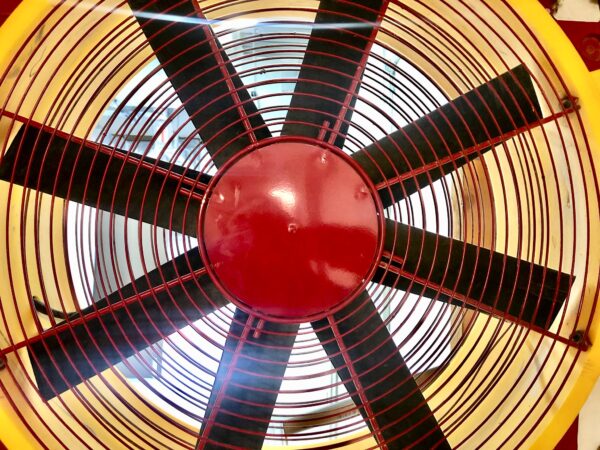So how do you Pass a Smoke Shaft Air Test? Passing a smoke shaft air test is crucial for ensuring the safety and compliance of building ventilation and fire control systems; however, trying to pass a smoke shaft air test at the first attempt can be quite difficult. Here’s a summary of the key steps on how to prepare your smoke shaft for the air tightness test:
10 steps to help you pass the air testing to your smoke shaft
- Consult with Experts: Early consultation with our air tightness consultants can provide valuable insights into effective smoke shaft design, construction and sealing strategies.
- Air tightness target: Firstly, ascertain the Airtightness Target, smoke shafts typically need to achieve an airtightness level of less than 3.8 m³/h/m² @ 50 Pa, which can be quite difficult on a small enclosure, such as smoke shafts where the volume is much smaller than the envelope.
- Smoke shaft design: Firstly, the design of the smoke shaft is very important. Wherever possible ensure the construction materials are robust enough to provide a tight air barrier, such as concrete walls or high-density blocks, ensuring there are no gaps in mortar joints.
- Internal finish: Treat the inside of the shaft as the primary air seal line. The finish should be smooth and sealed at all junctions and joints. For instance, if it’s constructed from masonry, parge coat the walls, if its concrete ensures all movement joints are sealed with mastic. If it’s an internal plasterboard finish, ensure every joint and screwhead is fully sealed.
- Seal all service penetrations: ensure all services, structural penetrations, and cable penetrations are fully sealed to the smoke shaft envelope.
- Ensure all doors openings within the smoke shaft are fully sealed with heavy duty materials such as Corex sheeting etc. if lightweight materials are used with low tack tape they will simply blow off.
- Seal AOV Door Frames: These are common leakage paths and the perimeter of the AOV doors, should be mastic sealed to the shaft and the doors carefully temporarily sealed.
- Seal Base and Head of Shaft: Ensure the head and base of the shaft is carefully sealed prior to the air test visit.
- Undertake the air testing to CIBSE TM23: Use a UKAS calibrated blower door fan set to pressurise the shaft and measure the air tightness. Also ensure the fan used for testing is correctly sized to pressurise the shaft to the required levels, usually 70Pa. Many companies use small fans systems that don’t have the required capacity to test the shaft to the requirements of CIBSE TM23, so it will invalidate the test.
- Addressing an air test Failure: If the shaft fails to meet the air leakage target, use smoke testing and/or thermal imaging to identify and seal leaks and produce a detailed air leakage survey report to help clients target the air leakage paths.

Our expert smoke shaft consultation services
For complex designs and remedial work, consult with experts who specialise in smoke shaft systems to advise on the best solutions and ensure compliance with the relevant safety standards.
We are a UKAS accredited, as well as being certified to ATTMA Level 2 for air tightness testing. For a detailed guide, you can refer to our article that provide a comprehensive roadmap and tips for preparing your smoke shaft for an air test. It’s advisable to consult with UKAS accredited air tightness consultants early in the process to increase the chances of passing the smoke shaft air test on the first attempt.

How we can help you PASS your smoke shaft air test
There are many ways we can help you pass your air test at the first attempt. Firstly, our experienced engineers have over 10 years in the field of smoke shaft testing – having undertaken hundreds of air test, so we know how to help clients to pass their testing:
Our simple roadmap to a successful smoke shaft air test:
- Smoke shaft survey visits by experienced air tightness consultants.
- UKAS and ATTMA Level 2 air testing company
- UKAS smoke shaft air test certification
- The latest high-powered fan equipment
- UKAS calibrated equipment
- Diagnostic leakage surveys testing using smoke machines & thermal imaging
- Rapid testing service – sometimes within 48 hours!
We offer leading design, consultancy, and compliance for every part of your project. It’s APT’s aim to provide a friendly and professional stress-free experience. Please contact Darren on 07775623464, or email us at info@airpressuretesting.co.uk got more information.
